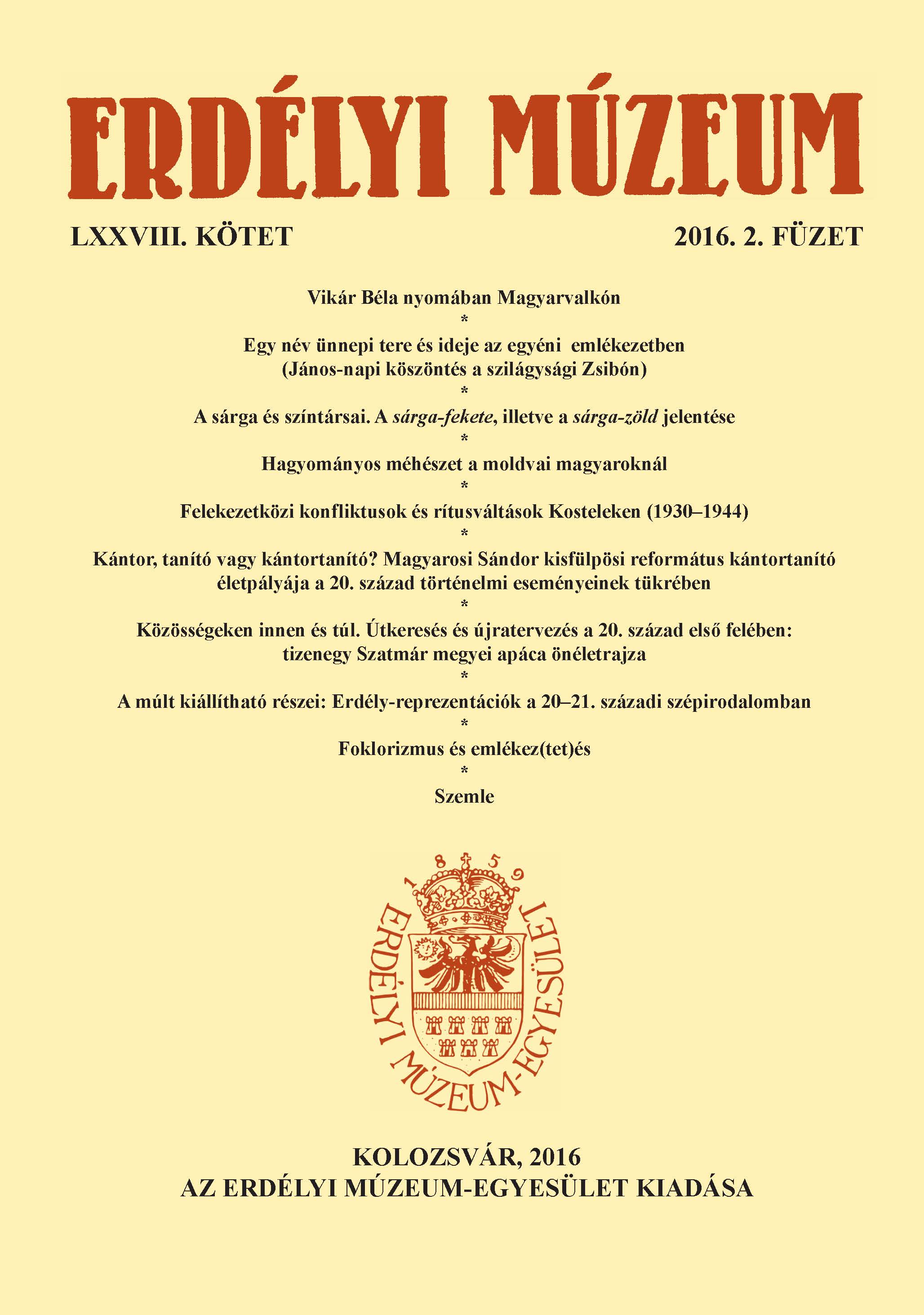Vikár Béla nyomában Magyarvalkón
Following Béla Vikár’s Footsteps in Magyarvalkó
Author(s): Lujza TariSubject(s): Customs / Folklore, Cultural Anthropology / Ethnology
Published by: Erdélyi Múzeum-Egyesület
Keywords: folk music; recording on phonographs; ethnomusicology; Béla Vikár; Kalotaszeg (Călata)
Summary/Abstract: The folk culture of Kalotaszeg was already discovered in ethnography towards the end of the 19th century. The exploration and collection of its folk music was begun by the linguist-folklorist Béla Vikár. In the village of Magyarvalkó, which was known by ethnographer, Vikár collected music at least twice, however recordings only from his 1900 field trip remained. He recorded 42 Hungarian and 3 Romanian folk songs on 13 phonographs, which were later transscribed by Béla Bartók. After 1900, no ethnomusicologist visited Magyarvalkó for decades, until Lujza Tari – the author – arrived at the village in 1973. The ethnomusicologist reached this place through her family connections. Her husband is the descendant of Magyarvalkó’s priests at the time of Vikár’s collections around the turn of the 19th and 20th centuries: father Elek Miháltz and son Ákos Miháltz were his great-grand and grandfathers. These priests always graciously helped the efforts of the visiting ethnographer, and personally contributed to allowing the folklore, dialect, and history of Kalotaszeg to be introduced to the wider public through these collections. While providing an inside look into the oral heritage of the folk music of the given village, the author also strives to provide a few additions to our understanding of the history of the ethnographic and folk music collections of Kalotaszeg.
Journal: Erdélyi Múzeum
- Issue Year: LXXVIII/2016
- Issue No: 2
- Page Range: 1-23
- Page Count: 23
- Language: Hungarian

